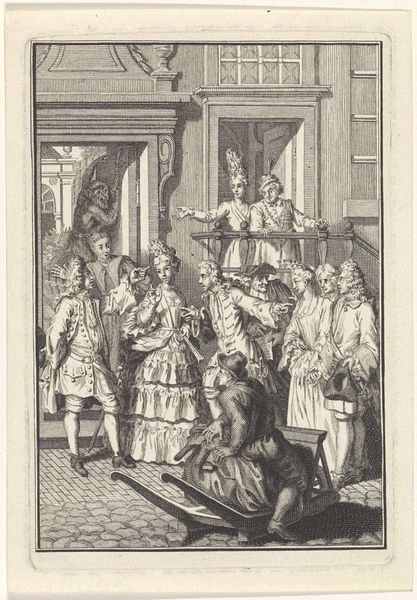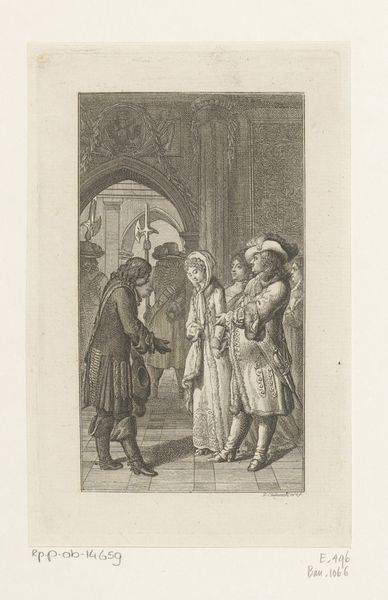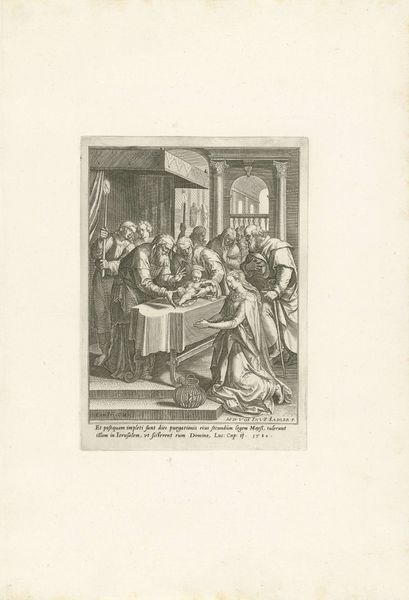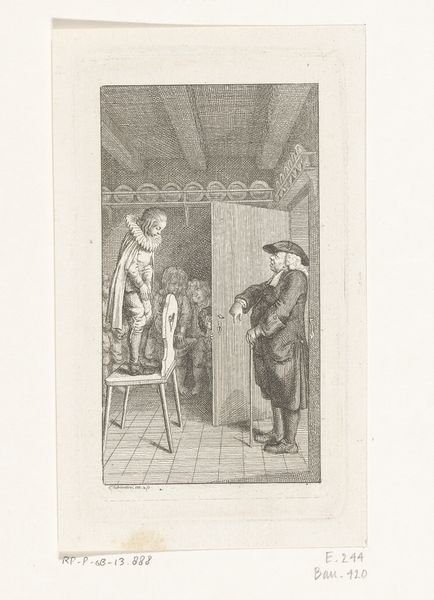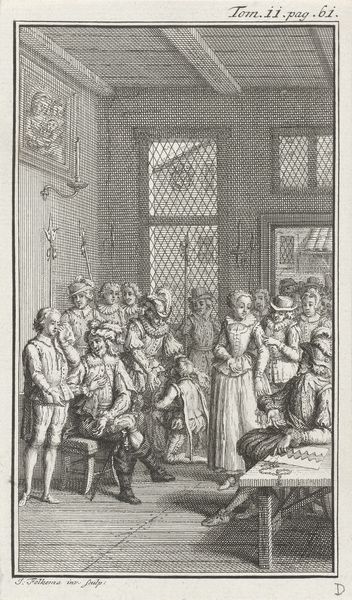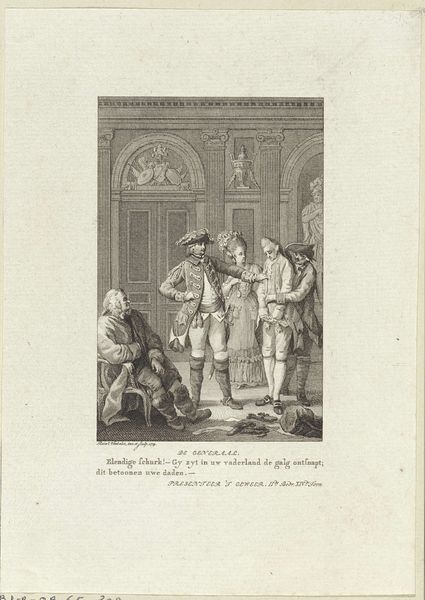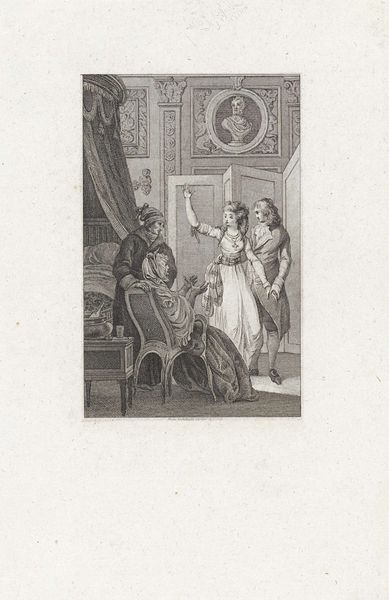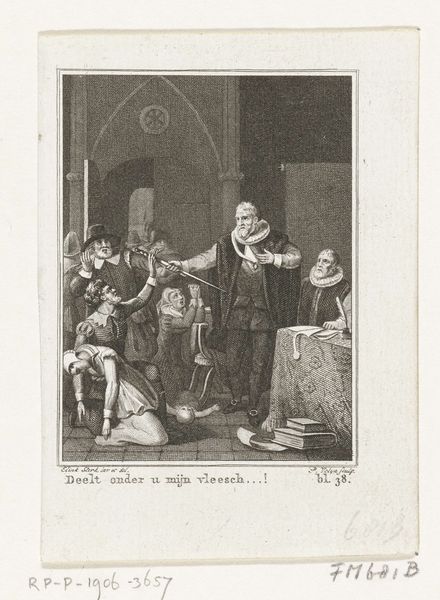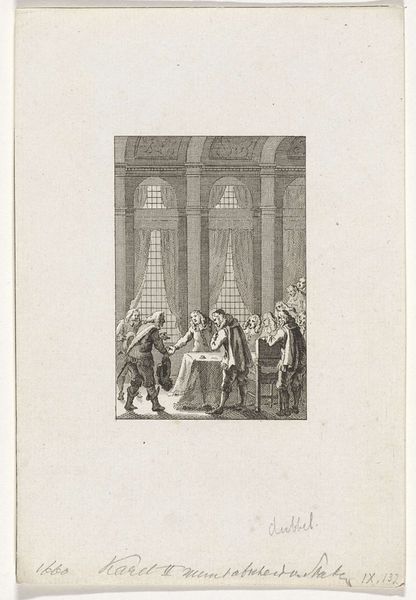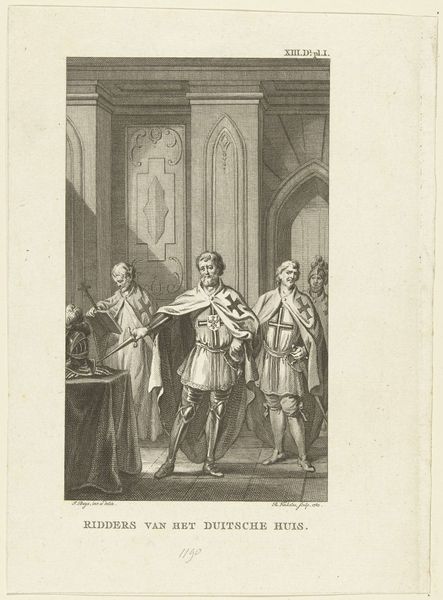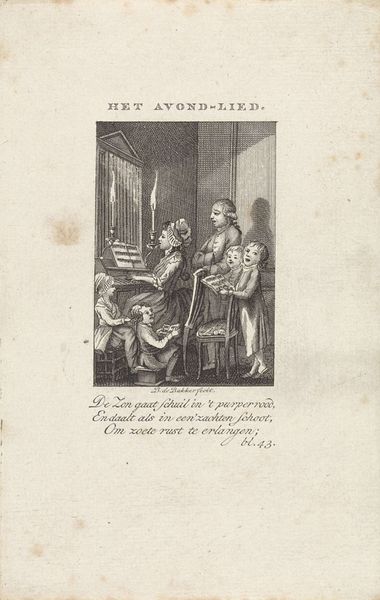
print, engraving
#
narrative-art
#
dutch-golden-age
# print
#
old engraving style
#
genre-painting
#
engraving
Dimensions: height 231 mm, width 129 mm
Copyright: Rijks Museum: Open Domain
Curator: Immediately I notice the stillness; the entire scene feels held, reverent. Editor: That's quite accurate, given what's depicted here! This engraving, titled "Hillegonda wordt gedoopt", dating back to 1814, captures the baptism of a woman named Hillegonda. It's currently housed at the Rijksmuseum, a tangible remnant of the Dutch Golden Age's artistic spirit created by Reinier Vinkeles. Curator: The symmetry draws me in, mirroring faith in some respects. The careful arrangement of figures, from the preacher holding what seems to be holy water to the onlooking crowd; all these reinforce this symmetry. A dialogue with belief, isn’t it? Editor: Indeed. Consider baptism in the context of identity and belonging. It's more than a ritual; it’s a public assertion, a claim to a specific community, even an early form of identity politics if we allow for intersectional analysis. It represents Hillegonda’s alignment with specific religious values and social norms. The cultural assimilation at play here is compelling. Curator: And within that act, so much is communicated through these individuals. The face of Hillegonda for instance speaks volumes, so clearly illuminated compared to some shadowy attendees nearby. Her transition is emphasized. Editor: Let’s also remember this period in Dutch history. Think of religious freedom, hard-won after struggle. So, a public baptism in 1814 carries the weight of generations fighting for religious autonomy. Even a seemingly mundane act speaks volumes regarding past and continued struggle for freedom of faith, both in the Netherlands and across the world. Curator: And beyond a simple rendering of such event this piece reminds me of spiritual continuities. The echoes of symbolism stretching from then until today resonate powerfully, and offer quiet moments of consideration even in the rush of modernity. Editor: I agree. By positioning artworks like this in the flux of history, we not only interpret what they meant then but actively engage with what they can mean for us now, politically and personally.
Comments
No comments
Be the first to comment and join the conversation on the ultimate creative platform.
